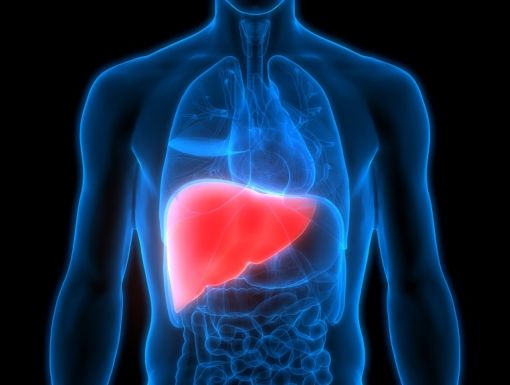
Pediatric Liver Transplants: Why Go to Ochsner
Having a child with a life-threatening liver disease is any parent’s worst nightmare. It’s especially overwhelming when you are trying to find the right pediatric liver transplant center for your needs. An important first step for parents of children with liver disease is to arm yourself with information about your child’s condition and the transplant process. Here are some answers to common pediatric liver transplant concerns.
What does the liver do?
The liver is the second largest organ in the body, and it has three major functions. The first is detoxification. Like a refinery, the liver eliminates toxins that we ingest and the byproducts of metabolism. Next, the liver is an important factory for production of useful substances like carbohydrates, specialized proteins, and the bile that helps us with digestion. Lastly, the liver acts as storage for essential vitamins and glycogen, a source of energy we use to get through the day.
What are common liver diseases?
- Biliary atresia: refers to injury to the bile ducts, the network of tubes which drain bile from the liver into the intestine. Infants with this condition develop jaundice and cirrhosis in the first few months of life. While a surgical procedure to restore bile flow is the first step in therapy, biliary atresia remains the most common reason for pediatric liver transplantation worldwide.
- Autoimmune hepatitis: involves an individual’s immune system inappropriately attacking the liver. Initial therapy is directed at blunting the immune response, but some individuals will progress to end-stage liver disease and require transplantation. Autoimmune hepatitis affects mostly older children and adolescents.
- Acute liver failure: This is defined as the sudden onset of severe liver dysfunction in an individual with no prior underlying liver disease. While in children most cases of acute liver failure don’t have an identified reason, infections, overdoses, environmental exposures and certain genetic conditions are among the potential causes.
- Liver cancer: while rare in pediatric patients, children may develop hepatoblastoma or hepatocellular carcinoma. While both of these cancers can sometimes be cut out of the liver surgically (resection), it’s crucial to make that decision with a team experienced in treating pediatric liver cancer with surgery and transplant, because the outcomes of liver transplantation after a failed resection are poor.
- Portal Hypertension: high pressure in the blood vessels which feed the liver can develop with the liver has too much scarring (fibrosis) from underlying liver disease of any type. Portal hypertension may lead to bleeding when blood vessels in the esophagus (varices) burst, retention of fluid in the abdomen (ascites) and difficulty with the heart, lungs and kidneys.
- Genetic and metabolic: one of the most exciting and evolving areas of liver transplantation is the ability to restore normal physiology, or even cure, some inherited conditions which involve functions carried out by the liver.
What can I expect from the Ochsner Pediatric Liver Transplant Program?
Here at Ochsner, you can expect comprehensive care with your child’s best interest at the heart of all we do. Every patient starts their journey by being matched with a registered nurse coordinator who will guide them through every step of the process. Transplantation is truly a team effort; our experts in hepatology, transplantation and surgery are supported by a team of nutritionists, social workers, pediatric psychologists and palliative care specialists. We build each child’s team to suit his/her own needs so that nothing important is left to chance.
What is the process for a pediatric liver transplant?
This first step in the transplant process is formally evaluating the patient. Typically occurring over a few days, the patient and family have the opportunity to meet all the team members as we conduct a thorough head-to-toe exam, including blood tests, imaging and biopsy, if needed. Our multi-disciplinary team carefully reviews the medical data, weighing risks and benefits of transplantation and any available therapeutic alternatives, to make a recommendation for/against transplantation. Children who are ill-enough to warrant transplantation are placed on the national liver transplant waiting list. In some instances, living-donor liver transplant options are also appropriate to explore at this juncture. Waiting times for transplantation are variable depending on factors such as the child’s body weight, blood type and severity of illness.
What are the surgical considerations for transplanting children?
When it comes to pediatric liver transplant the most important considerations are the child’s underlying disease, blood type and size. Most liver donors are not children and therefore an appropriate size-matched whole liver may not be readily available. However, split liver transplants can help mitigate this problem. A split liver transplant is when the surgeon cuts the left part of a larger liver (from an adult or adolescent) and then transplants it into the child. Often, the remaining right side of the liver can then be transplanted into an adult, thus saving two lives from a single donated liver. Living donors aren’t right for every child’s situation, but when they are, they allow us to more precisely control the timing of transplantation.
What are the outcomes after a pediatric liver transplant?
The patient will generally spend a few days in the intensive care unit and then several more on the pediatric ward; the average hospital stay for children after liver transplantation is 10-14 days. National data (www.srtr.org) shows that there is a 95% patient survival after one year after transplant and 93% at 3 years. Most patients can lead healthy lives and can resume normal activities.
What are some of the important factors for a successful transplant?
Many things contribute to your child’s successful liver transplant. The first is the timeliness of the transplant which starts with ensuring your child is evaluated right away. Well-developed processes and experience in the use of split livers and living donor livers are other factors which can improve timeliness. The nutritional status of your child before transplantation is equally critical. Better nutrition leads to faster healing and recovery, so we’re meticulous about the nutritional rehabilitation of liver transplant candidates. Last but not least, involvement from family and friends is essential. The best outcomes result from working with highly engaged parents who ask good questions, stay on top of their child’s medications and take full advantage of the resources available to them.


